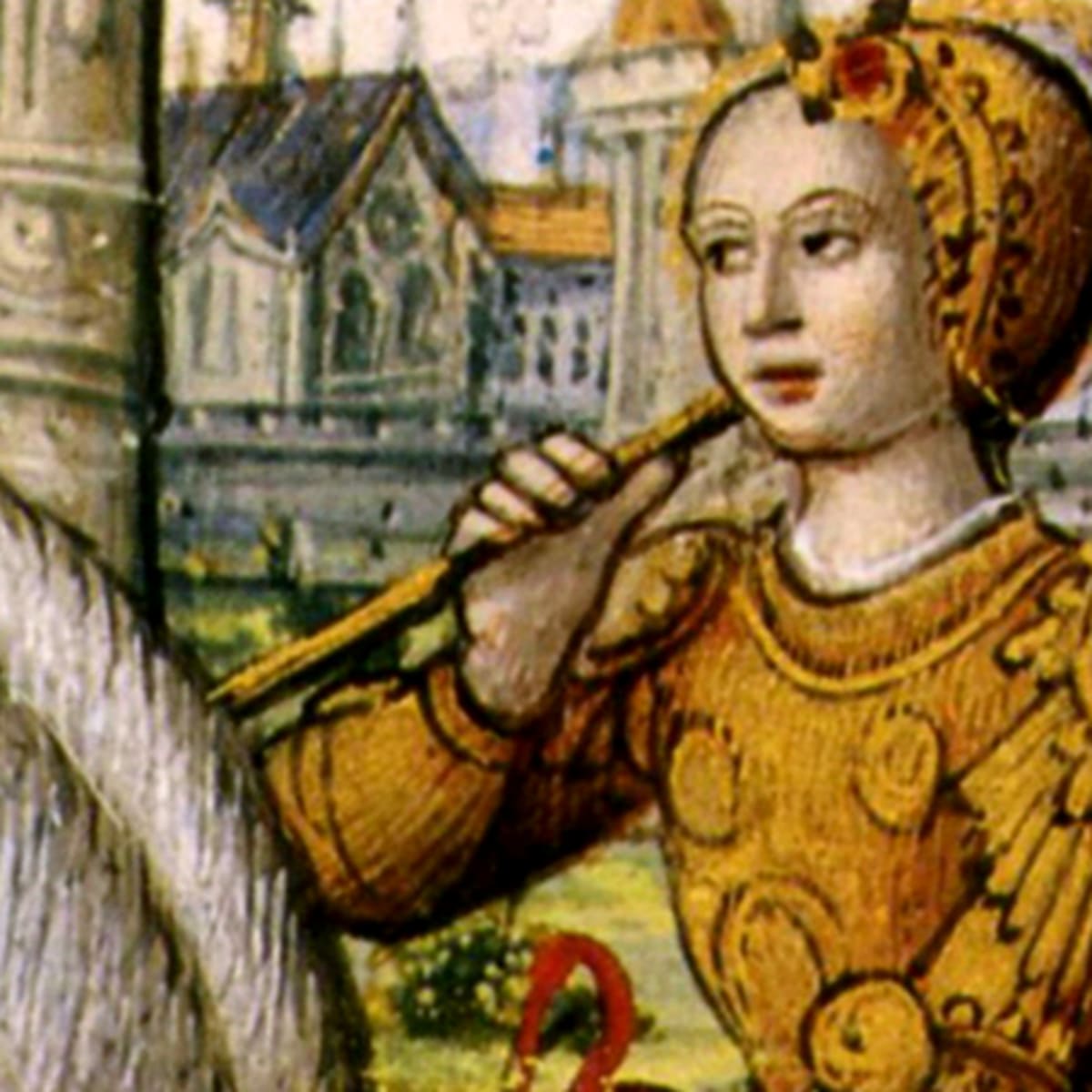Joan of Arc (c. 1412 – 30 May 1431)
“I am not afraid. I was born to do this.”
No self-respecting list of heroic women would be complete without Joan, aka the martyred Maid of Orleans.
Born around 1412 and burnt at the stake in 1431, Joan’s real name could have been Jehanne d’Arc, Jehanne Tarc, Jehanne Romée or possibly Jehanne de Vouthon.
She grew up an illiterate peasant in north eastern France, in a village called Domremy; her father was a farmer and her mother, Isabelle Romée, was an extremely observant Catholic who passed on her love for her faith to her daughter.
Joan took a vow of chastity and refused to accept a marriage her father had arranged for her. Legend has it that she heard voices and had visions – (symptoms perhaps of what modern medicine would classify as anything from schizophrenia and bipolar disorderr to bovine tuberculosis) urging her to cut her hair into the now famous bob and drive the English from France.
She had zero military experience but was persuasive enough to convince Prince Charles of Valois to let her lead an army to Orleans, the French town besieged by the English. Legend has it that Charles agreed to take Joan’s advice after a private meeting between the two, where Joan revealed information to the future King that could only have come from God. Whatever was said, he emerged as seemingly convinced as she was that she would crown him King at Reims.
They won a decisive victory resulting in Charles being crowned King Charles VII in 1429.
Joan wanted to continue and retake Paris but with Joan’s position of favour on the wane, the King was persuaded otherwise.
Interestingly for a woman remembered as a fighter, Joan, dressed in white armour and riding on a white horse, never actually fought, although she was wounded twice. She was more of a strategist and token mascot to inspire bravery and heroism in the French armies of Charles VII in the battles between the French and English during the One Hundred Years War.
At the Kings command, in 1430 she set off to fight the forces of Burgundy at Compiegne. She was captured outside the city gates by the English and taken to the castle of Bouvreuil.
Charles did nothing to save her. He dumped her like a tonne of bricks and left her to rot as a prisoner, chained to her bed, for a year, to face the inquisitors, who couldn’t break her spirit or find her guilty of heresy or witchcraft.
She might have been a teenager but she didn’t hesitate to school her elders for swearing or missing Mass. During her trial at Rouen, (she had 70 charges against her, including witchcraft) when asked by a churchman what languages the ‘voices’ in her head spoke, she furiously retorted that they no doubt spoke better French than he did.
She eventually caved in, denied she’d had divine intervention and signed her confession. But stubborn and contrary to the end, she reneged a few days later and dressed herself once more in men’s garb, resulting in her conviction as a relapsed heretic. In the end, her fate would be decided on the basis of her cross-dressing – something her captors argued went against the Bible. The English burnt her at the stake in Rouen on 30 May 1431. She would actually be burnt at the stake a total of three times in order for her organs and body to be completely destroyed. Her ashes were allegedly found in 1867 in the attic of a Parisian apothecary but tests proved them to be fake (and actually the remains of an Egyptian mummy and a cat); they remain in a museum dedicated to Joan in Chinon.
It would take twenty years for Charles to order a re-trial to restore Joan’s reputation. She was canonized as a saint in 1920 and her legend immortalised in art, literature and film.
“One life is all we have and we live it as we believe in living it. But to sacrifice what you are and to live without belief, that is a fate more terrible than dying.”

